You can enjoy your favorite herbal teas while reducing waste with three eco-friendly methods. First, try reusable tea bags made from organic cotton or hemp, which can last for hundreds of uses. Alternatively, opt for loose leaf infusers like stainless steel balls or mesh baskets that allow ideal flavor extraction. For the simplest approach, steep herbs directly in your pot or kettle and strain with a fine-mesh sieve. These methods not only minimize environmental impact but also enhance your tea-drinking experience. Each technique offers unique benefits, from convenience to flavor maximization, making your herbal tea ritual more sustainable and enjoyable. Discover how these zero-waste options can transform your daily brew.
Reusable Tea Bags
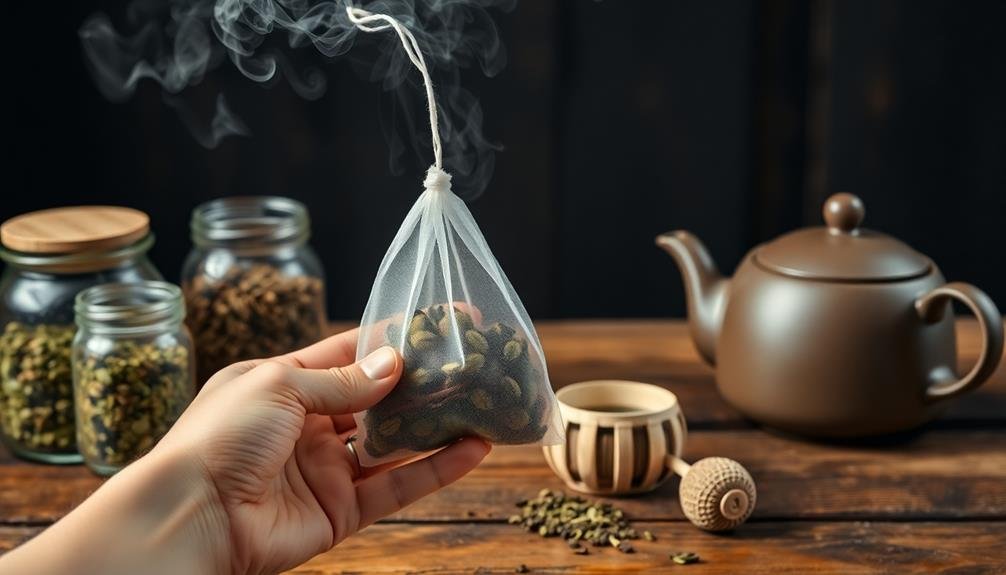
While disposable tea bags contribute to unnecessary waste, reusable tea bags offer an eco-friendly alternative for herbal tea enthusiasts. You'll find various options made from materials like organic cotton, hemp, or food-grade silicone.
These bags are designed to withstand multiple uses and can be easily cleaned between steeping sessions.
To use reusable tea bags, simply fill them with your favorite loose-leaf herbal tea blend. The bags typically feature a drawstring or zipper closure to keep the herbs securely inside. You can adjust the amount of tea leaves based on your preference for strength and flavor.
After brewing, empty the used herbs into your compost bin and rinse the bag thoroughly. For a deeper clean, you can boil the bags in water or run them through the dishwasher occasionally.
Most reusable tea bags can last for hundreds of uses before needing replacement.
Loose Leaf Infusers
Loose leaf infusers offer another excellent option for zero-waste tea brewing. These reusable devices allow you to steep loose tea leaves directly in your cup or teapot without the need for disposable filters or bags.
You'll find a variety of infuser styles, including ball-shaped strainers, mesh baskets, and silicone tea eggs.
To use a loose leaf infuser, simply fill it with your desired amount of tea leaves and place it in your cup or pot of hot water. The infuser's perforations or mesh allow water to circulate freely around the leaves, extracting their flavor and beneficial compounds.
Once your tea has steeped to your liking, remove the infuser and empty the used leaves into your compost bin.
Loose leaf infusers are typically made from durable materials like stainless steel or food-grade silicone, ensuring they'll last for years with proper care.
They're easy to clean and maintain, often dishwasher-safe, and won't impart any unwanted flavors to your tea.
Direct Pot Steeping
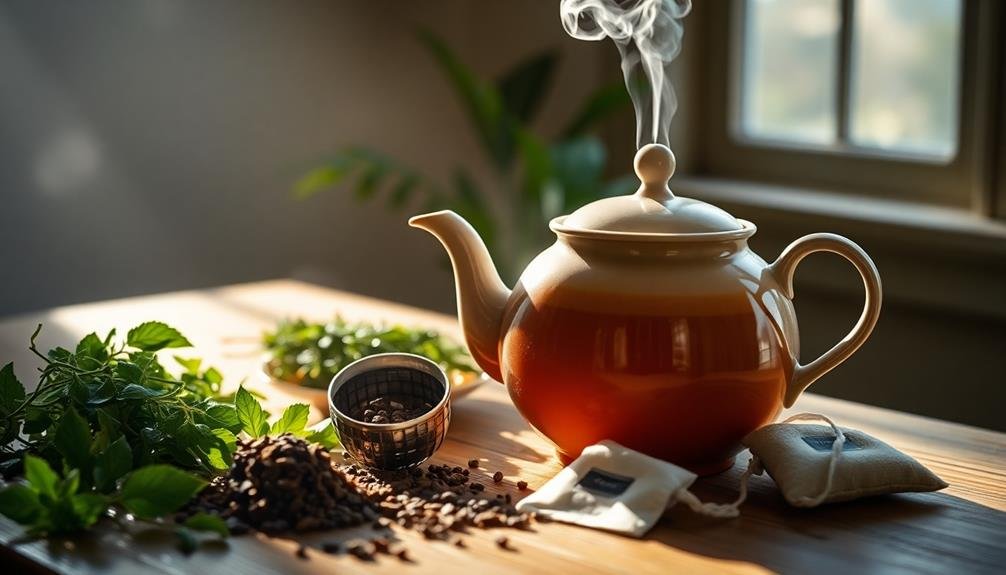
For those seeking the simplest zero-waste tea brewing method, direct pot steeping offers an effortless solution. This technique involves adding loose herbs directly to your pot or kettle, eliminating the need for any additional tools or accessories.
You'll simply place your desired amount of herbs into the pot, pour hot water over them, and let them steep.
To strain the tea, you can use a fine-mesh sieve or a slotted spoon when pouring it into your cup. This method allows for maximum flavor extraction as the herbs have unrestricted contact with the water. It's particularly suitable for large batches of tea or when brewing for multiple people.
When using this method, be mindful of the steeping time to avoid over-extraction, which can lead to bitter flavors. You can also experiment with different herb combinations to create unique blends.
After brewing, don't forget to compost the used herbs, completing the zero-waste cycle. Direct pot steeping is versatile, working well with various herbs like chamomile, peppermint, and lemon balm.
It's an excellent choice for those who prioritize simplicity and sustainability in their tea-making routine.
Frequently Asked Questions
How Long Can I Store Homemade Herbal Tea Blends?
You can store homemade herbal tea blends for up to 6 months in an airtight container, away from light and moisture. For ideal freshness, use them within 3 months. Always check for any signs of spoilage before use.
Can I Compost Used Herbal Tea Leaves?
Yes, you can compost used herbal tea leaves. They're great for your compost bin, adding nutrients to the soil. You'll want to avoid any tea bags with plastic or staples. Just toss the loose leaves into your compost pile.
Are There Any Herbs Unsafe for Tea Making?
You should be cautious when making herbal teas. Some herbs can be unsafe or toxic. Don't use comfrey, ephedra, or pokeweed. Always research herbs before using them and consult a healthcare professional if you're unsure or have health concerns.
How Can I Dry Fresh Herbs for Tea at Home?
You can dry fresh herbs for tea at home by hanging them in bundles, using a dehydrator, or spreading them on a tray in a warm, dry place. Make sure they're completely dry before storing to prevent mold growth.
What's the Ideal Water Temperature for Different Types of Herbal Teas?
You'll find that different herbs require specific temperatures. For delicate herbs like chamomile, use water around 200°F. Robust herbs like peppermint can handle boiling water. Generally, aim for 190-205°F for most herbal teas. Experiment to find your preference.
In Summary
You've now learned three excellent zero-waste methods for making herbal tea. Whether you choose reusable tea bags, loose leaf infusers, or direct pot steeping, you're reducing waste and enjoying a more sustainable tea experience. Don't be afraid to experiment with different techniques to find your favorite. Remember, small changes in your daily routine can make a big difference for the environment. So go ahead, brew your next cup of tea with a clear conscience and savor the eco-friendly flavor.

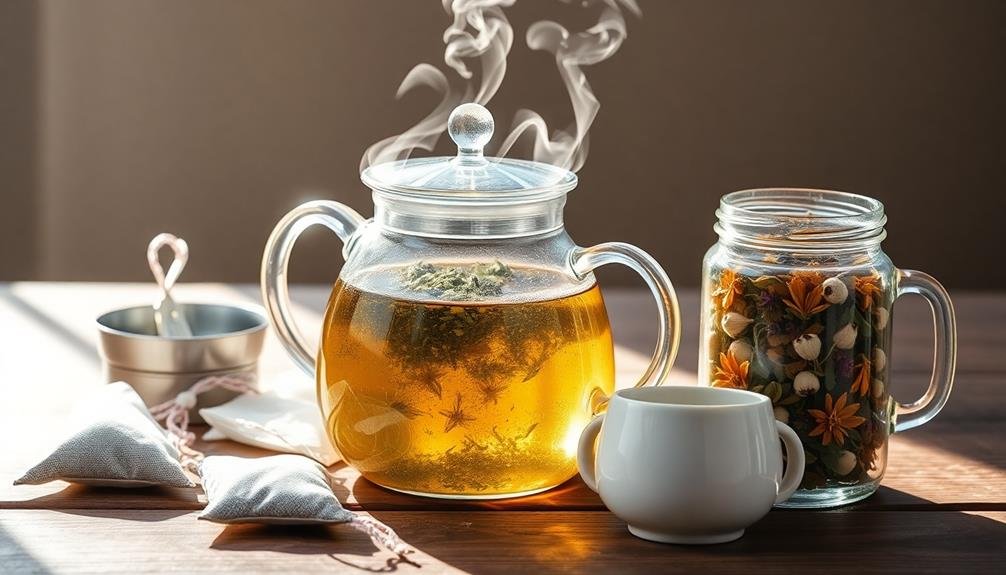
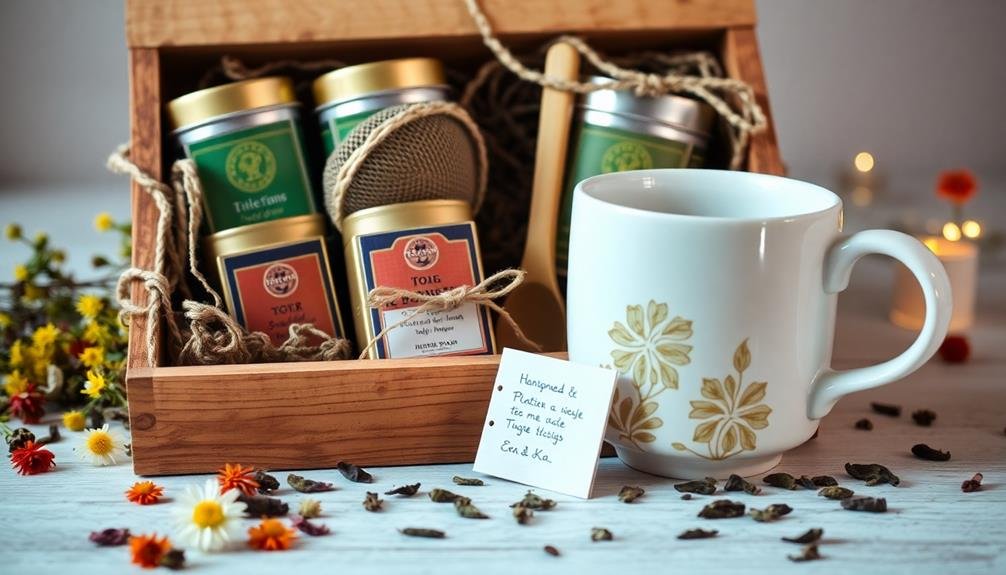

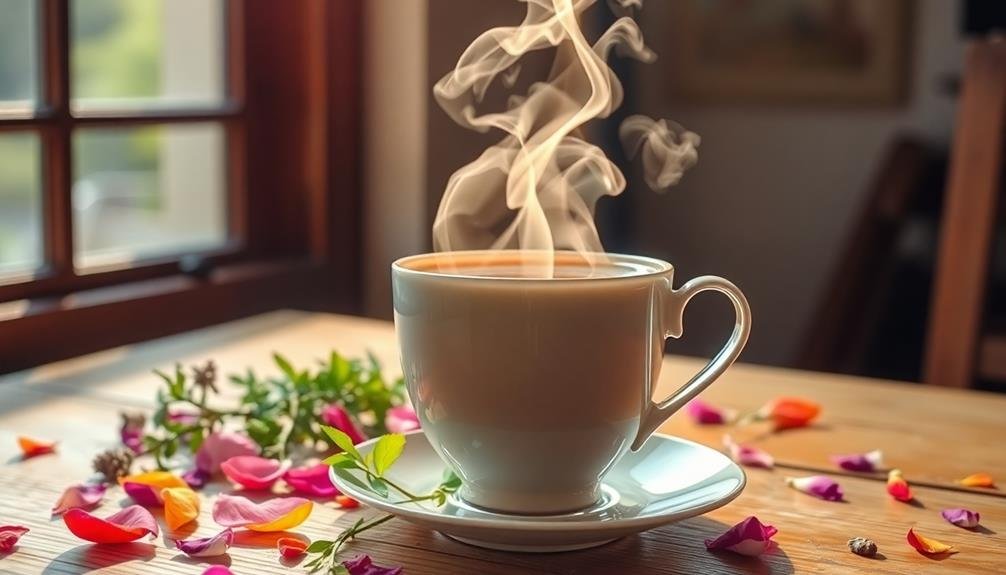
Leave a Reply